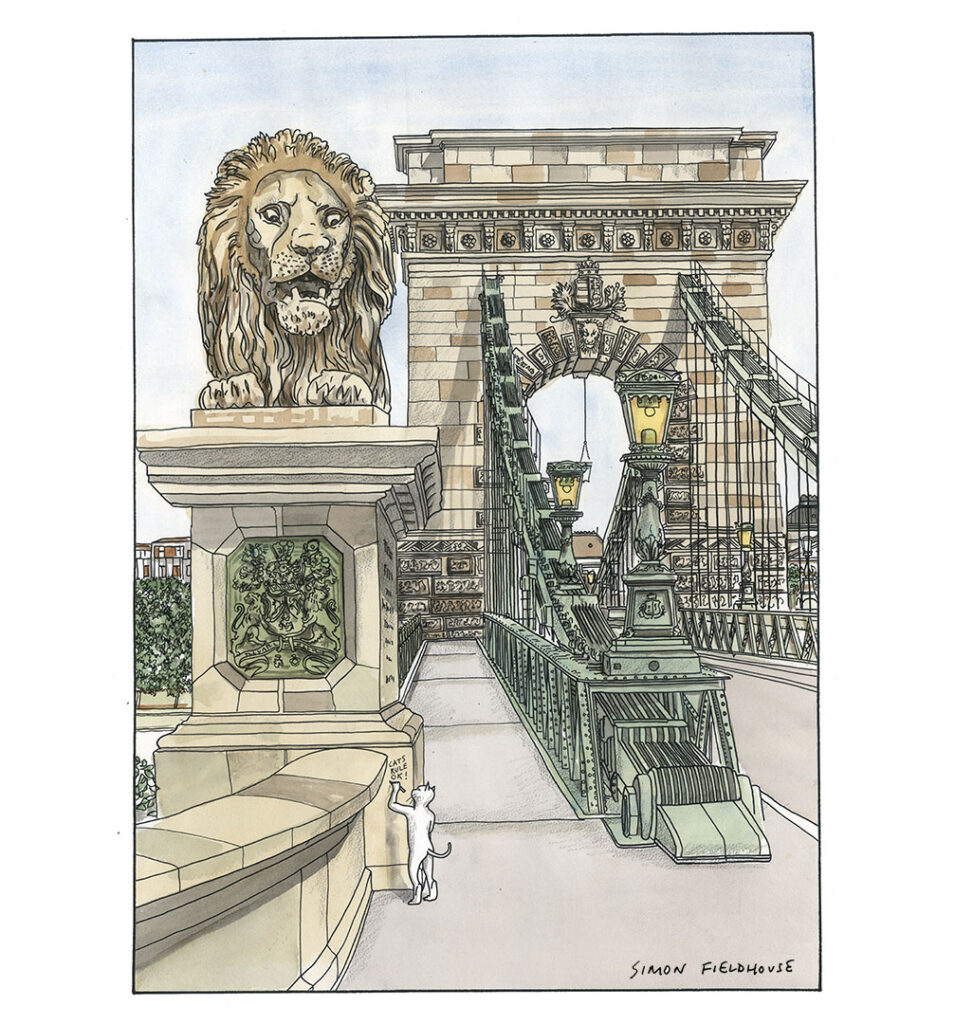
Chain Bridge - Budapest
The Chain Bridge, locally known as Széchenyi Lánchíd, spans the Danube River, connecting the hilly Buda district with the flat Pest side of Budapest. Designed by the English engineer William Tierney Clark, construction of the bridge began in 1839 and was completed in 1849. It was the first permanent bridge across the Danube in Budapest, marking a transformative moment in the city's history.
The Chain Bridge holds profound historical and cultural significance for Budapest and Hungary. Its construction played a pivotal role in linking Buda and Pest, which were once separate cities. This merger laid the foundation for the unified Budapest we know today. The bridge's completion facilitated economic and cultural exchange, fostering a sense of national cohesion during a critical period in Hungarian history.
One of the most compelling aspects of the Chain Bridge is its symbolic role in overcoming adversity. The mid-19th century saw Hungary grapple with political and social challenges, including the failed Hungarian Revolution of 1848-49. Throughout this turbulent time, the Chain Bridge stood as a beacon of hope, representing the resilience of the Hungarian people in the face of adversity.
The Chain Bridge is an architectural masterpiece that seamlessly blends functionality with aesthetic elegance. The bridge spans 375 meters, featuring two majestic stone lions at each end, sculpted by János Marschalkó. These iconic statues serve as guardians, standing watch over the city and symbolizing strength and protection.
The bridge's suspension system, a pioneering design in its time, consists of massive iron chains that support the roadway. The combination of stone and iron not only contributes to the bridge's structural integrity but also enhances its visual appeal. Illuminated by night, the Chain Bridge becomes a radiant link between Buda and Pest, casting a warm glow on the Danube waters below.
Over the years, the Chain Bridge has become more than just a physical connection between two districts; it has evolved into a cultural hub. The bridge has been featured in literature, poetry, and art, serving as a muse for countless creative minds. Its picturesque setting, flanked by historic buildings and offering panoramic views of the city, makes it a favorite spot for locals and tourists alike.
In conclusion, the Chain Bridge in Budapest is not merely a structure of stone and iron; it is a symbol of unity, resilience, and the enduring spirit of the Hungarian people. From its humble beginnings in the mid-19th century to its current status as a cultural icon, the Chain Bridge has played a crucial role in shaping Budapest's identity. As it continues to stand tall over the Danube, the Chain Bridge remains a living testament to the power of human ingenuity and the ability to overcome challenges, leaving an indelible mark on the city's history and the hearts of those who cross its storied path.